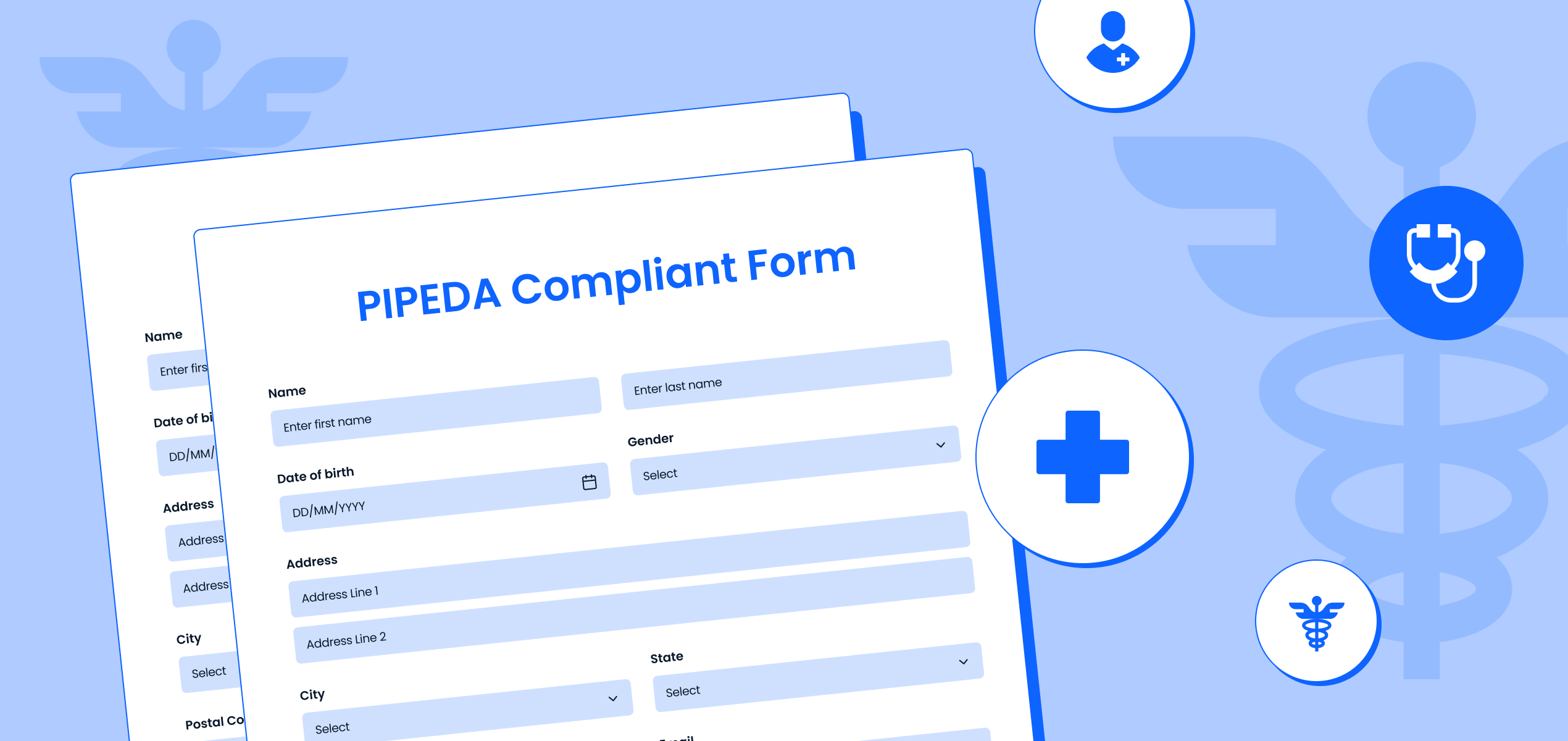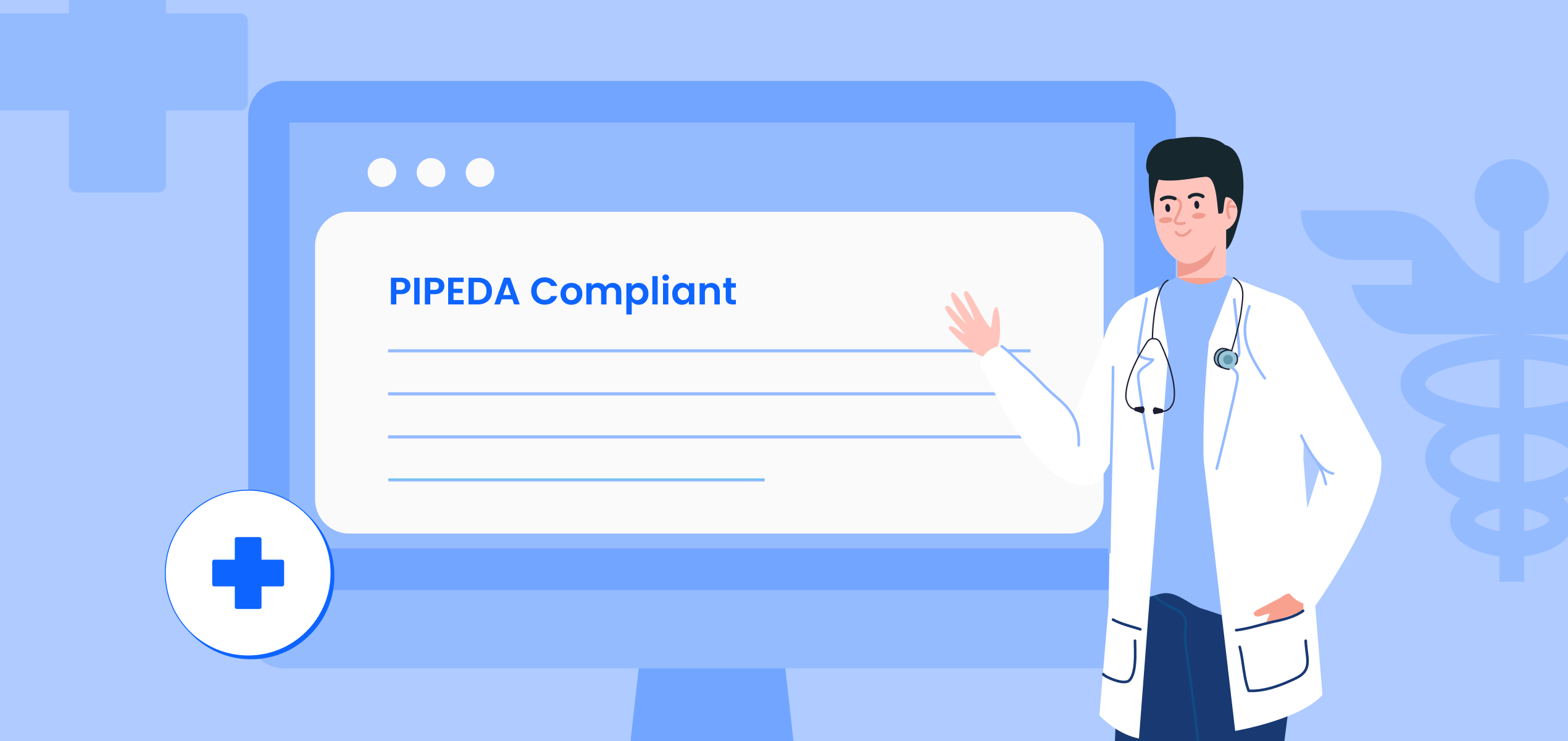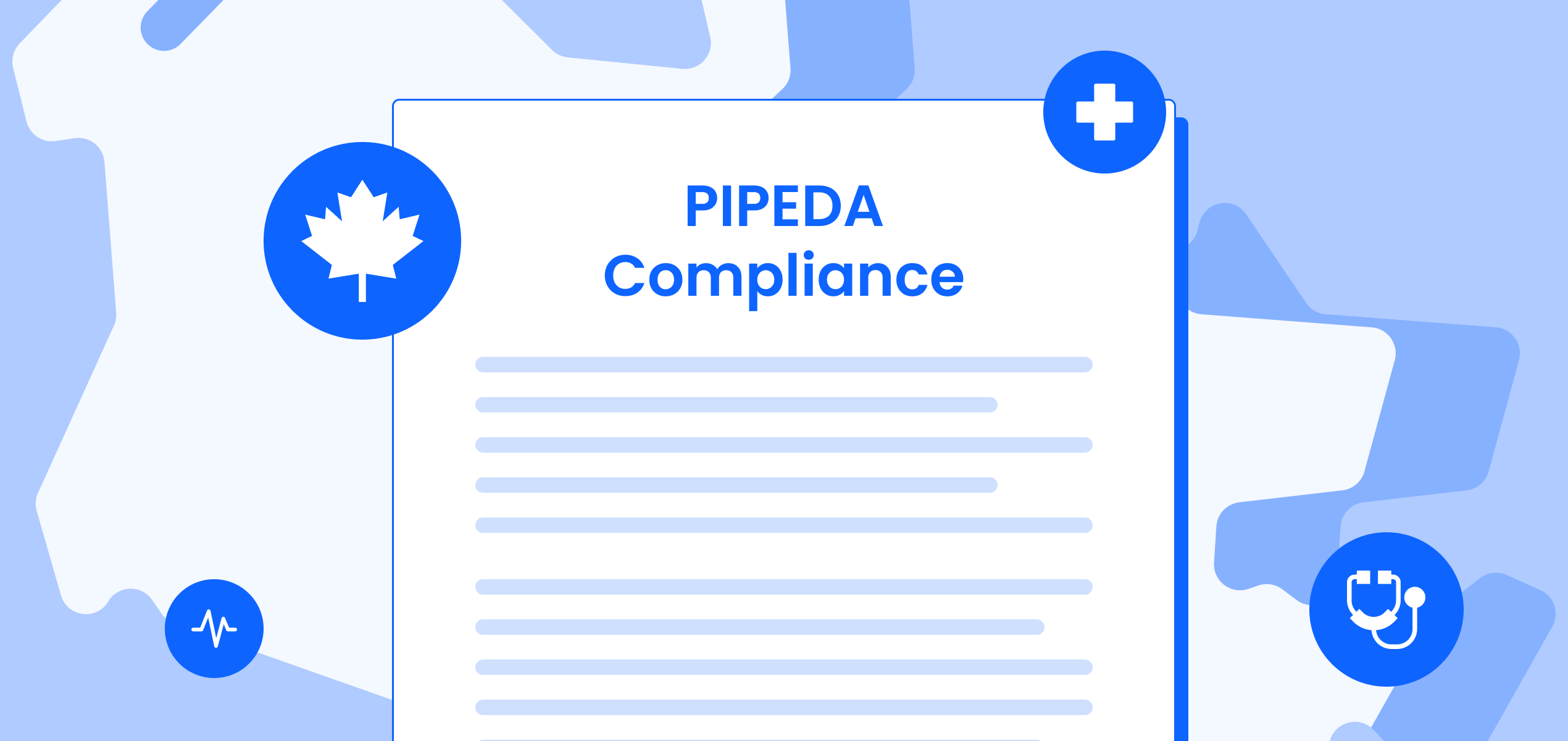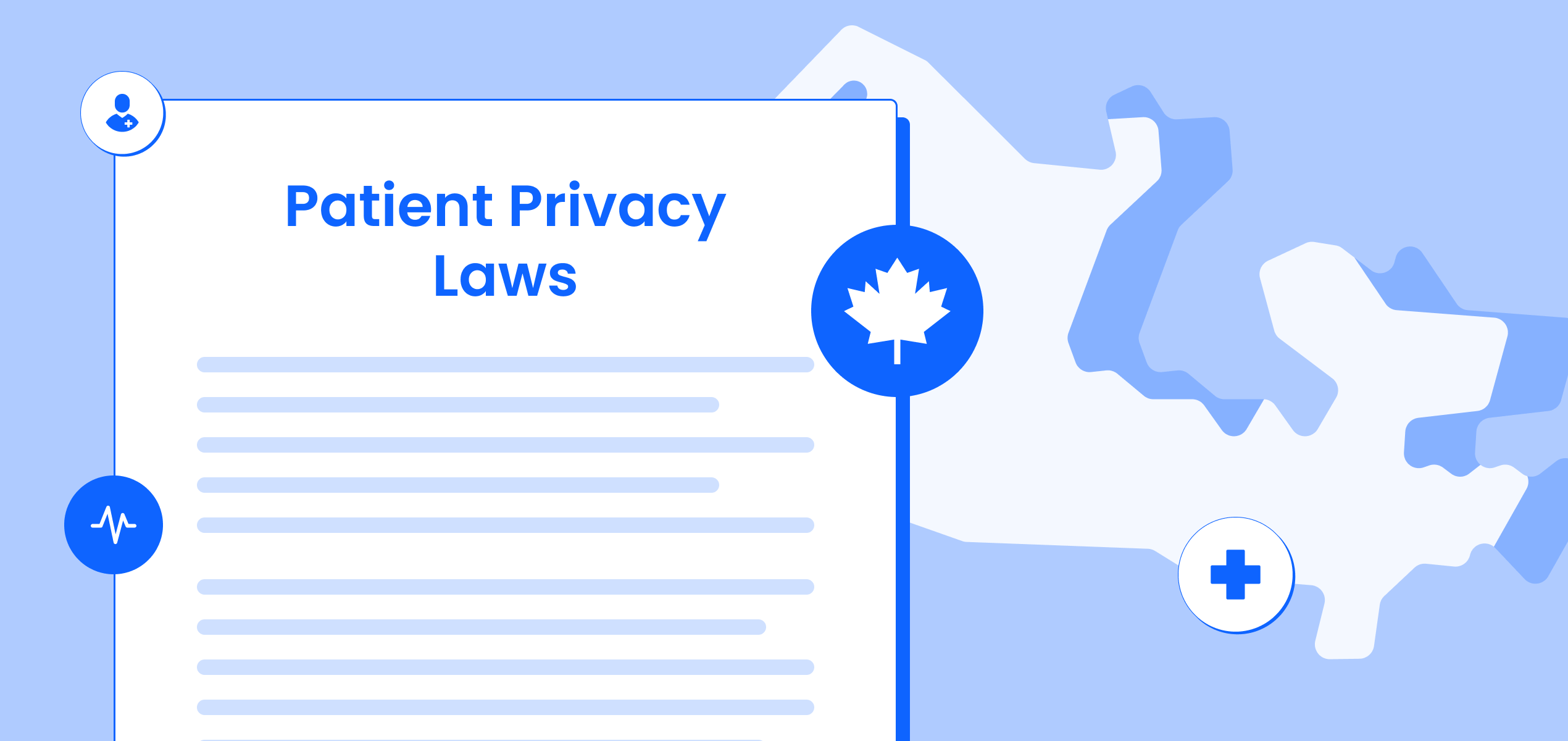Summary:
- PIPEDA is a Canadian law that protects patient privacy and sets out guidelines on how dental practices must handle patient information.
- Dental practices that violate PIPEDA can face financial penalties, reputational damage, and lawsuits.
- To comply with PIPEDA, dental practices should design intake forms that clearly explain why they need each piece of information, offer patients a choice to consent, and use secure methods to collect and store data.
- Best practices for designing PIPEDA-compliant forms include using clear and concise language, avoiding pre-checked consent boxes, and offering patients a way to access and update their information.
Protecting patient privacy is very important for dentists just like any other healthcare practice. Canada’s Personal Information Protection and Electronic Documents Act (PIPEDA) is a law that ensures patients have control over their data.
In this guide we explain what PIPEDA requires and how to build compliant intake forms for your dental practice, including:
- Understanding the key principles of PIPEDA, like getting patient consent and keeping information secure.
- The consequences of violating PIPEDA, such as fines and reputational damage.
- How to design clear and secure intake forms that follow PIPEDA guidelines.
By following this guide, you can ensure your dental practice protects patient privacy and complies with PIPEDA regulations.
Understanding HIPAA vs. PIPEDA
Both US and Canada have regulations that safeguard a patient’s privacy, however their key players have certain differences.
HIPAA (Health Insurance Portability and Accountability Act)
In the US, HIPAA (Health Insurance Portability and Accountability Act) focuses specifically on protecting Protected Health Information (PHI) within the healthcare industry. This applies to health providers, insurers, and other third parties only when they have a patient’s informed consent.
PIPEDA (Personal Information Protection and Electronic Documents Act)
Canada’s approach is broader. PIPEDA (Personal Information Protection and Electronic Documents Act) is a federal law governing the collection, use, and disclosure of personal information by private sectors, including dental practices.
The key difference lies in the scope: HIPAA targets PHI, while PIPEDA encompasses a wider range of personal information, which also includes health data.
PIPEDA establishes a framework for responsible handling of personal information, and has laid down 10 key principles. Here’s a detailed blog explaining the same.
Why PIPEDA Matters in Dental Practices?
Earning patient trust is essential. Here’s how prioritizing patient privacy and following PIPEDA principles can help your dental practice:
- Strong Reputation: By adhering to PIPEDA, you demonstrate responsible data handling, building trust and a positive reputation.
- Clear Communication: Well-designed, PIPEDA-compliant intake forms ensure clear communication with patients about how you collect and use their information.
- Transparency Matters: Transparency builds trust. Your forms should clearly explain why you need each piece of information collected.
Violations or non-compliance with PIPEDA can have serious consequences for your dental practices. This includes:
- Financial Penalties: The Office of the Privacy Commissioner of Canada (OPC) can impose hefty fines for non-compliance.
- Reputational Damage: A data breach or privacy violation can severely damage a dental practice’s reputation, leading to patient loss and negative publicity.
- Lawsuits: Patients whose information is compromised due to non-compliance may have legal recourse.
What Dentists Must Do?
Building PIPEDA-Compliant Dental Forms
What to Include In Your PIPEDA Dental Forms? (With Examples)
A well-crafted PIPEDA form is key to informing patients and obtaining their consent. Let’s break down the essential sections to guide you in creating a clear and compliant form:
1. Introduction & Privacy Statement:
The goal of this section is to explain your commitment to patient privacy and adherence to PIPEDA.
You can start with a sentence assuring your patients that their privacy is your dental practice’s priority. Mention your compliance with PIPEDA. In a concise statement, explain how you handle patient information and their right to access it. Consider including a link to your website’s privacy policy for more details.
Here’s an example:
Example: “At [Dental Practice Name], your privacy is important to us. We adhere to PIPEDA principles for responsible handling of your personal information. This form outlines the information we collect and how we use it to provide dental care. You also have the right to access and update your information on file. For more details, visit our privacy policy: https://makeforms.io/privacy-policy/ “
2. Consent Section:
This section helps obtain informed consent from patients for information collection and use. Briefly explain the types of information you collect (e.g., name, medical history), and clearly state the purpose for collecting this information (e.g., providing dental care).
Offer a designated space for the patient’s signature to provide written consent.
Here’s an example:
“To provide you with the best possible dental care, we collect information like your name, address, and medical history. By signing below, you consent to our collection and use of this information for this purpose.”
3. Information Collection:
Clearly outline the specific information categories you collect. To further help, divide the section into categories relevant to your practice (e.g., patient information, medical history, dental insurance).
Within each category, list the specific details you collect (e.g., name, address, allergies, medications).
Briefly justify the need for each piece of information. This showcases your respect for patient privacy and informs them about how their data will be used.
Example:
Patient Information:
- Name (For identification and communication)
- Address (For appointment reminders and billing statements)
- Phone Number & Email Address (For contacting you about appointments, treatment updates, and other important information)
Medical History:
- Allergies (To ensure safe treatment planning)
- Medications You Are Currently Taking (To avoid potential drug interactions)
- Past Dental Procedures (To understand your dental history and tailor treatment)
Dental Insurance Information (Optional):
- Include this section only if you directly bill insurance.
- Briefly explain how the information is used for billing purposes.
Emergency Contact Information:
- Name of emergency contact person
- Relationship to patient
- Phone number (Used to reach someone in case of emergencies during treatment)
4. Signature and Date (Verification):
Obtain a verifiable record of patient consent by providing a clear space for the patient’s signature and date.
By signing, the patient acknowledges their understanding and consent to the information practices outlined in the form.
Example:
By signing below, I acknowledge that I have read and understand this form. I consent to the collection, use, and disclosure of my personal information as described above.
Patient Signature: ________________________
Date: ________________________
Here are some more tips to help you craft a well-designed PIPEDA dental form:
- Keep the form clear and easy to understand for your patients.
- Use simple and plain language to avoid any confusion.
- You can add sections for specific purposes, like a marketing opt-in section if you want patient consent for promotional emails.
By following the structure provided and incorporating best practices, you can create a PIPEDA-compliant form that helps build trust and transparency with your patients.
Make it Easy With MakeForms
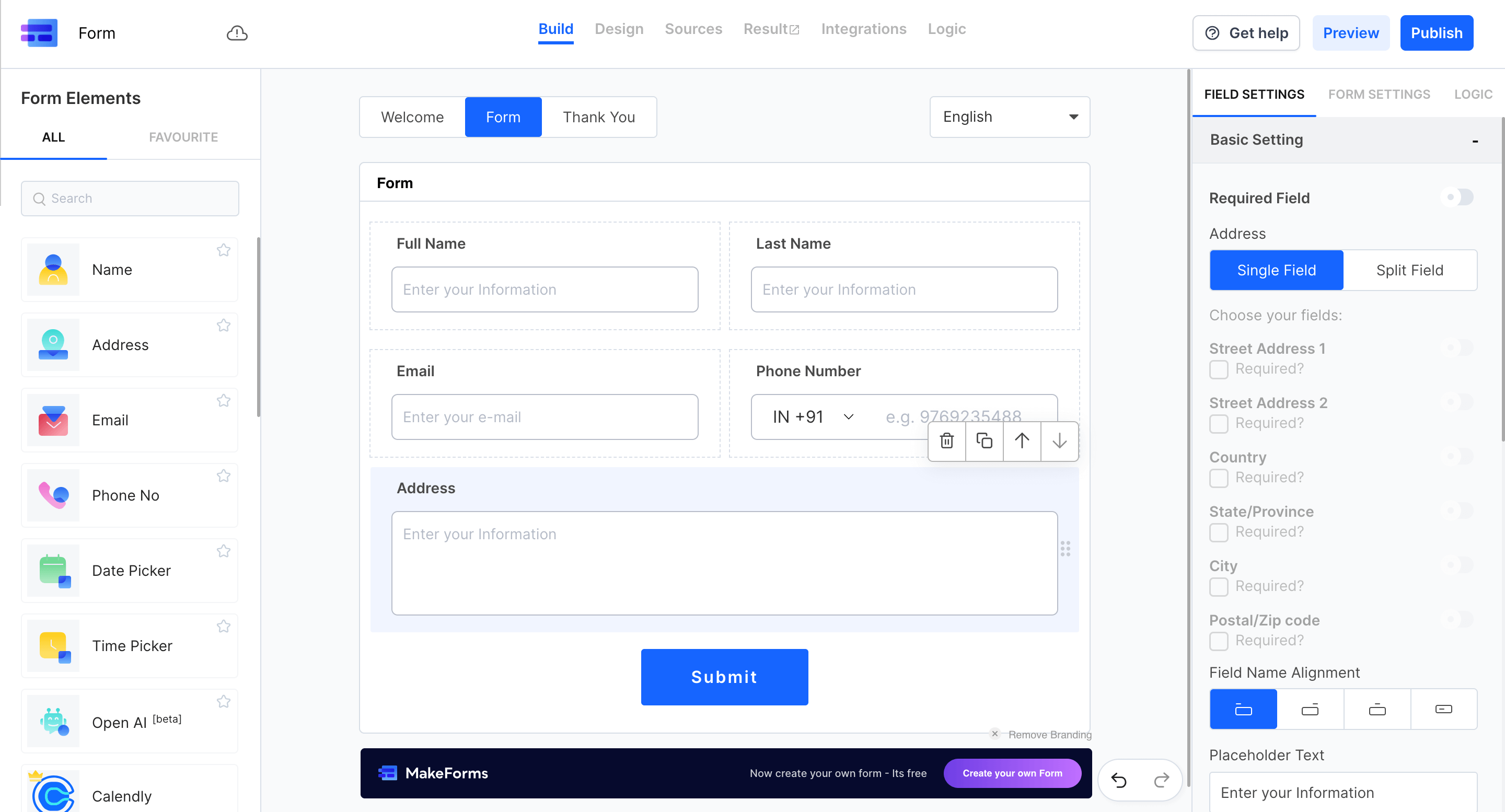
Keeping patient information safe is a top priority! Building forms that follow PIPEDA rules can be tricky, but services like MakeForms can help.
MakeForms offers ready-made dental intake forms that already follow PIPEDA. You can easily adjust them to fit your practice, and they’re super user-friendly.
Along with this, MakeForms keeps all your patient information securely stored in the cloud. This way, you can focus on what matters most – providing excellent dental care!
Related: HIPAA Compliant Online Forms
FAQs
PIPEDA (Personal Information Protection and Electronic Documents Act) is a Canadian law that safeguards patient privacy and dictates how dental practices handle patient information. Following PIPEDA ensures responsible data handling, builds trust with patients, and avoids legal issues.
HIPAA focuses on protecting health information within the healthcare industry, while PIPEDA has a broader scope. PIPEDA covers a wider range of personal information, including health data.
Non-compliance can lead to financial penalties, reputational damage from data breaches, and potential lawsuits from patients whose information is compromised.
The form should explain your commitment to patient privacy, obtain informed consent for information collection, clearly outline what information is collected and why, and provide a space for patient signatures.
Use plain language, avoid pre-checked consent boxes, and explain the purpose for collecting each piece of information. Consider using sections for patient information, medical history, and optional marketing consent.
Yes, services like MakeForms offer pre-made dental intake forms that are already PIPEDA-compliant and can be easily customized for your practice. They also ensure secure storage of patient information.
